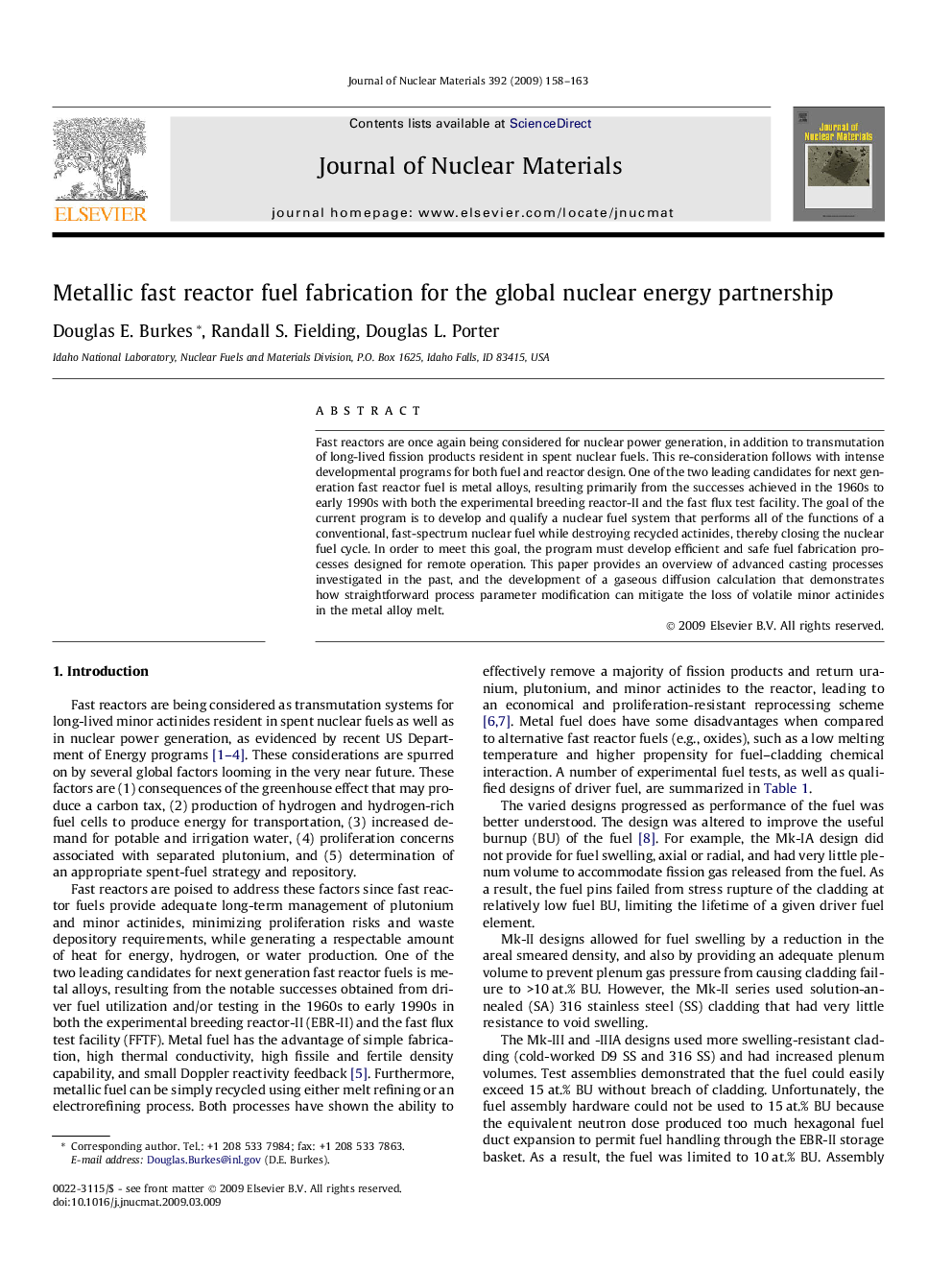| Article ID | Journal | Published Year | Pages | File Type |
|---|---|---|---|---|
| 1568405 | Journal of Nuclear Materials | 2009 | 6 Pages |
Fast reactors are once again being considered for nuclear power generation, in addition to transmutation of long-lived fission products resident in spent nuclear fuels. This re-consideration follows with intense developmental programs for both fuel and reactor design. One of the two leading candidates for next generation fast reactor fuel is metal alloys, resulting primarily from the successes achieved in the 1960s to early 1990s with both the experimental breeding reactor-II and the fast flux test facility. The goal of the current program is to develop and qualify a nuclear fuel system that performs all of the functions of a conventional, fast-spectrum nuclear fuel while destroying recycled actinides, thereby closing the nuclear fuel cycle. In order to meet this goal, the program must develop efficient and safe fuel fabrication processes designed for remote operation. This paper provides an overview of advanced casting processes investigated in the past, and the development of a gaseous diffusion calculation that demonstrates how straightforward process parameter modification can mitigate the loss of volatile minor actinides in the metal alloy melt.
